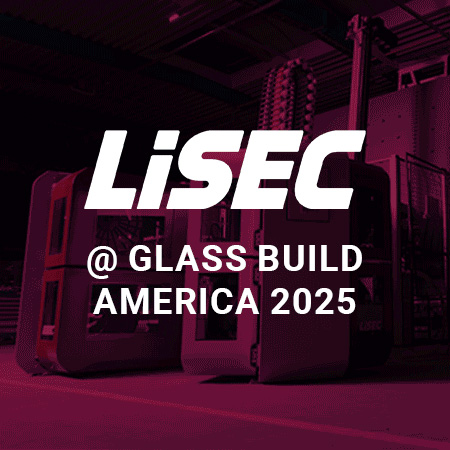Building for the Future
The Rise of AI in the Flat Glass, Window, & Door Industry

In the ever-evolving landscape of our industry, where flat glass, windows, and doors meet innovation and ingenuity, a new revolution is at our doorstep, Artificial Intelligence.
Construction is an industry rife for change, but change is usually slow and methodical. Change is scary for companies and individuals alike. Add onto that unknowns, an unwillingness to change your tried-and-true manual methods, and you wind up with some companies unable to keep up with their competitors, companies that are already employing technology and software to execute orders faster.
AI: What it is, and what it can do
Before proceeding, let’s discuss what AI is. It is a term used to describe when machines mimic human cognitive function, such as problem solving, pattern recognition, data analysis, and learning basic and complex concepts. Given the opportunity, machines can “learn” from data without being explicitly programmed. That development now allows machines to better understand and provide insight into uncovered processes, such as analyzing consumer data or understanding maintenance schedules for machines.
Technology is abundant in factories, but there is room to grow, adapt, and advance your processes with new technology, software, and AI. Additionally, construction sites are methodically transforming into hubs of technological opportunity with changes in construction protocol, advancements in software and safety, and much more. Whether you’re in the factory, front office, or on the construction site entering orders, delivering a finished product, or building something onsite, technology in general, and AI more specifically, has the opportunity to completely reshape every aspect of our industry. Welcome to a new era, where AI influences process optimization, productivity, automation, software, factory configurations, safety, predictive analysis, among other functions.
As a reminder, AI is continuously changing and improving based on new data. This data will affect what solutions are developed in the future. Today I’m outlining potential opportunities for AI to positively impact the ways people work in order entry, on the factory floor, how managers handle/address the labor shortage, and at logistics. In the future, through the gathering and analysis of data, AI could make additional impacts, including product suggestions, revamp your website to specifically target each visitor’s individual needs, reorder processes on and off the factory floor, etc. We work in an innovative, creative industry. Is now the time to employ AI and watch your company grow? Let’s find out!
AI on the factory floor
Technology tied in with software is ubiquitous on the modern factory floor. Technology enables fabricators to upgrade their facilities to meet the needs of today’s consumers and deliver to the bottom line. Tie AI in together with technology and software, you’ll have an extra “worker” allowing your company to make split-second decisions for the betterment of the business and consumer.
Where AI can help your manufacturing business
Process decisions
AI is capable of making process decisions, including monitoring and improving production and quality control on factory floors. Imagine a project where AI not only monitors inbound client orders, but it also learns from repeat customers, tracks their needs, adapts to their wants, and makes changes based on their notes or known parameters of similar projects or houses, for example.
Another example is how AI can learn to increase yield by recalling the location of stock plates, control robots to work repetitive tasks, or work behind-the-scenes to restock inventory.
Maintenance
Maintenance challenges can hinder your business. With the inclusion of AI to supplement machine manufacturer specifications, maintenance personnel can work proactively to address challenges, identify machines operating outside of their preferred specifications, find solutions faster, and use digitized instruction manuals to locate and implement step-by-step, real-time solutions based on issues discovered and reported at other manufacturers.
With real-time adjustments, your maintenance team can prevent downtime or quality issues, thus allowing for greater productivity.
Repetitive tasks
When referring to productivity, it is important to understand how AI can eliminate repetitive tasks and processes. For example, you can employ AI to control robots to carry out repetitive tasks. AI can also monitor which shifts and employees do the best work allowing you to utilize the best employees to train new employees to make custom-made products for particular customers.
Speaking of productivity, every project has risk, such as delays and cost overruns. The bigger the project, the greater likelihood some challenges arise. By leveraging AI, you can monitor and mitigate these risks.
Monitoring systems/ quality control
Productivity can also be increased by the use of intelligent monitoring systems, such as those developed by Viprotron. When you use highly efficient glass scanners to check for inclusions, bubbles, and process-related scratches, you can feed this information into AI to better understand potential issues during production, as the result of a specific machine, or from a specific vendor, for example.
AI also has the potential to improve quality control on the factory floor. It can learn from data, utilize said data to make informed decisions, locate trends, pinpoint quality control or safety issues, and prescribe corrective actions. When AI utilizes AI-enabled inspection scanners, it can increase accuracy, shorten inspection times, reduce recalls, and thus improve your cost savings. With greater detection and inspection upfront, you can troubleshoot potential issues, allowing your business to increase yield and profitability.
As AI’s capability’s develop and more people utilize it, additional use-cases will arise for inclusion of AI on the factory floor. Be on the lookout for upcoming changes to the factory floor. Technology is not standing still and either should you, your employees, or your company.


